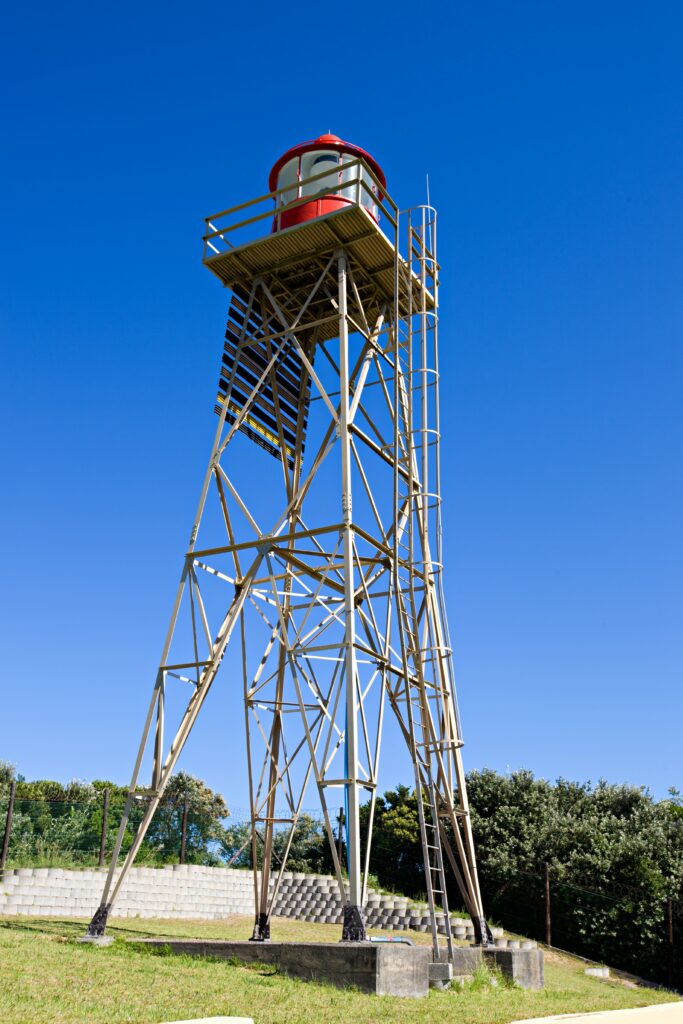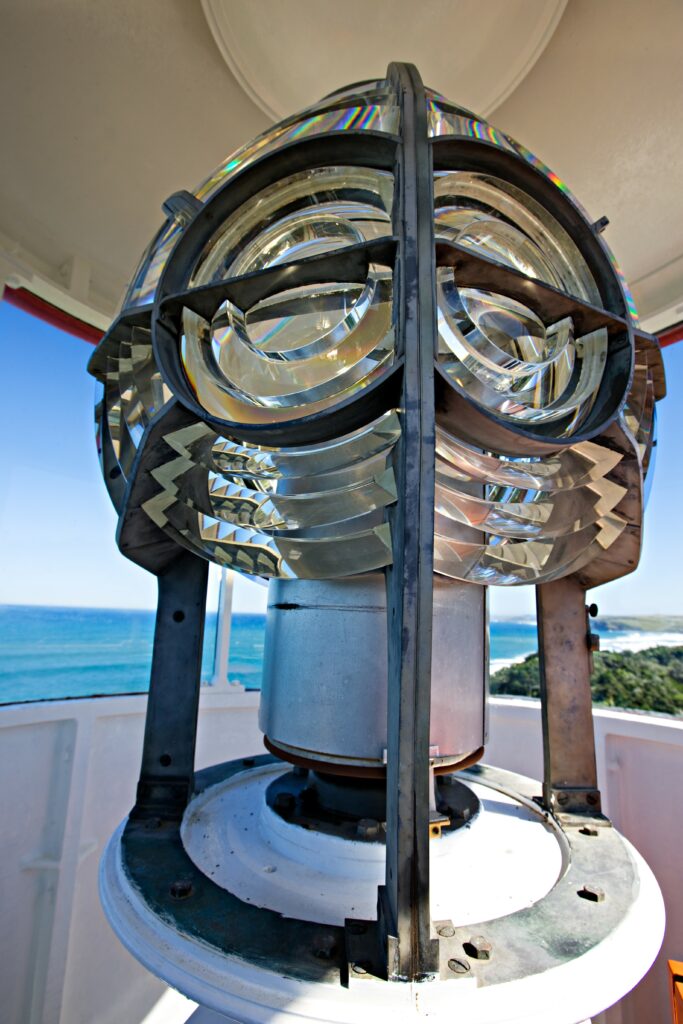Transnet National Ports Authority Cape Morgan Lighthouse
In the first week of February it was reported from Cape Town by Transnet National Ports Authority that Cape Morgan Lighthouse was marking 60 years of service. It is said to be the second youngest of ten lighthouses along the Eastern Cape coast.
It was first lit on the night of 5 February 1964.
Cape Morgan Lighthouse is situated three kilometres west of the Great Kei River mouth. The 12-metre aluminium lattice tower has a square daymark and a red lantern house. It is fitted with an LED lantern with a character of two flashes every 10 seconds.
Unmanned operation
The lighthouse is automated and is not manned. Scheduled maintenance is carried out by teams from Transnet National Ports Authority (TNPA) in East London.
During scheduled maintenance visits, TNPA employees check and service the light, the lantern house glazing, the lattice tower, and the standby diesel engine.
Before the electrification of the light in May 1980, the lighthouse was powered by diesel generators that ran 24 hours a day, seven days a week. The lighthouse still has one diesel generator on site, that is used as back-up.
Other lighthouses in the Eastern Cape with their dates of establishment are: Deal (1973), South Sand Bluff (1931), Mbashe (1926), Cape Hermes (1904), Great Fish Point (1898), Hood Point (1895), Seal Point (1878), Bird Island (1852) and Cape Recife (1851).
TNPA responsibilities
TNPA is mandated by the National Ports Act, 2005 (Act No. 12 of 2005) to provide, operate and maintain lighthouses and other marine aids to navigation (AtoNs) to assist the navigation of vessels within commercial port limits and along the coast of South Africa.
On a matter of nomenclature a marine AtoN is defined as: ‘A device, system or service, external to vessels, designed and operated to enhance safe and efficient navigation of individual vessels and/or vessel traffic.’
As our Members know lighthouses, beacons, and buoys are the most common types of visual AtoNs.
Virtual aids to navigation
Virtual AtoNs using current technology employ digital signals to warn of dangers in specific locations, without the need for physical buoys or lighthouses. The digital signals are transmitted from Automatic Identification System (AIS) stations and are received by AIS units onboard vessels. Large vessels – such as container ships and passenger ships – are required to carry AIS under IMO mandate. Smaller vessels do not have to carry AIS and therefore, visual marine AtoNs are retained in service.
International standards
TNPA AtoNs conform to the standards set by the International Association of Marine Aids to Navigation and Lighthouse Authorities (IALA). South Africa, represented at IALA by TNPA, and is a founder member of IALA in 1957.
About Transnet National Ports Authority
The National Ports Authority is responsible for the safe, effective, and efficient economic functioning of the South African national port system, which it manages in a landlord capacity.
It provides port infrastructure and marine services at the eight commercial seaports in South Africa: Richards Bay, Durban, Saldanha, Cape Town, Port Elizabeth, East London, Mossel Bay and Ngqura.
It operates within a legislative and regulatory environment and is governed by the National Ports Act (Act No. 12 of 2005).


Rapporteur: Paul Ridgway
